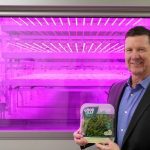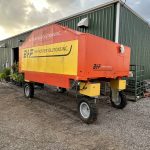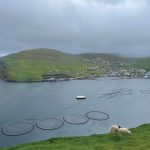Vertical, indoor farms have generated hype and have bee touted for their ability to reduce Canadian reliance on U.S. produce imports, but checking financial boxes has been an issue

Canada’s GoodLeaf Farms on track to become first vertical farm worldwide with all facilities profitable
Vertical, indoor farms have generated hype and have bee touted for their ability to reduce Canadian reliance on U.S. produce imports, but checking financial boxes has been an issue

Challenge model a new way to fund, support innovation
Five Ontario companies are among 13 semi-finalists selected in the federal government's Agricultural Methane Reduction Challenge, which is seeking innovative ways to reduce methane emissions from dairy and beef cattle.

New AI-based technologies offer weed control solutions
Canadian and Swiss companies using AI vision tools to target weeds with electricity and minimal chemical use
A Canadian ag tech company is putting a new spark into an old weed control method by using electricity, while a Swiss company is using high tech visioning equipment to target spray to weeds alone.

Optimized carcass cooling can boost processing plant margins
Collecting environmental data can lead to processing and meat quality improvements, Manitoba company says
Glacier FarmMedia – A sensor-based system for carcass cooling could save processing plants considerable money while also improving meat quality. The innovation by Manitoba-based Mode40 recently received funding from the Canadian Agri-Food Automation and Intelligence Network (CAAIN) Beef and Pork Primary Processing Automation and Robotics program. Why it matters: The pandemic put a spotlight on

Fish versus farms on the Faroes
After 1,000 years, the farmers of these islands have some unique insights
Glacier FarmMedia – In Canada, and indeed in most western countries, agriculture often struggles to be understood by a largely urban public that has little idea of where their food comes from. In the Faroe Islands, a collection of 18 islands midway between Scotland, Iceland and Norway in the North Atlantic, the fight for agriculture

Nanotechnology breathing new life into existing crop protection products
Company creates new ways of doing things with crop inputs
A University of Toronto graduate school project is now extending the life of widely used crop protection products. Vive Crop Protection’s trademarked Allosperse Delivery System uses nanotechnology to create new application methods for existing biological and conventional crop protection products. With few fully new chemicals coming to market, making existing products work better is a
OSCIA: Non-traditional crops may yield health market opportunities
There may be opportunities for Ontario farmers to grow medicinal and culinary herbs, as well as other non-traditional crops, for the health market — but the first step is determining whether it’s possible to grow these crops in Ontario. That step was the basis of a Ontario Ministry of Agriculture, Food and Rural Affairs (OMAFRA)-led
OSCIA: Cover crop options after winter wheat and into standing corn
A two-year research project underway in southwestern Ontario is evaluating various cover crops, including when and where to plant and how to manage them to achieve the best results. They’re being planted either after winter wheat harvest or into standing corn. “About five to 10 per cent of field crop growers use them on a
OSCIA: Managing soybean seedling diseases can cut production costs
High soybean yields begin with a healthy stand of vigorous plants. Seedling diseases, along with other factors such as weather, can result in the need to replant and drive up the cost of production. A project underway in conjunction with researchers from the U.S. is determining which pathogens affect soybean seedlings, and developing diagnostic tools
OSCIA: Disease awareness can improve alfalfa yield, quality
Traditional diseases affecting alfalfa crops are as prevalent as emerging ones — that’s the somewhat surprising finding of the 2012 alfalfa disease survey that was conducted in Ontario last year to look at incidence, distribution and severity of many common diseases affecting commercial alfalfa fields in Ontario. “We were initially thinking we would find mostly

